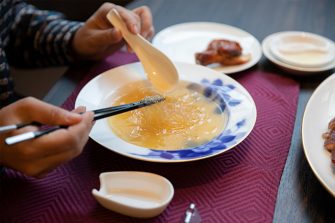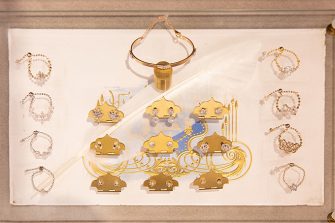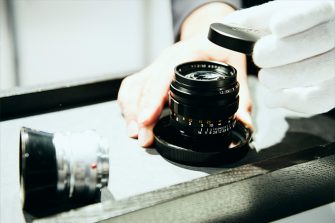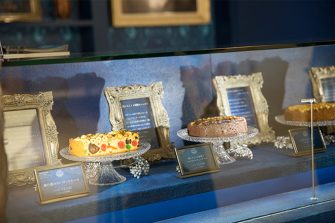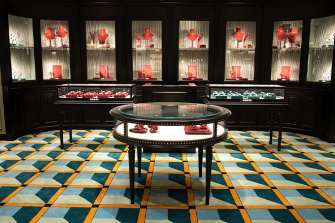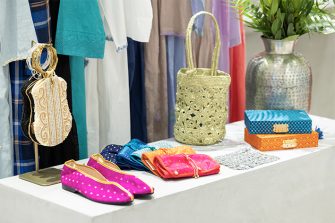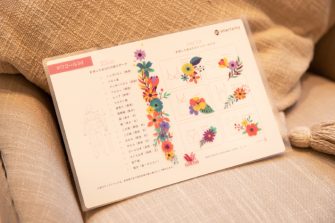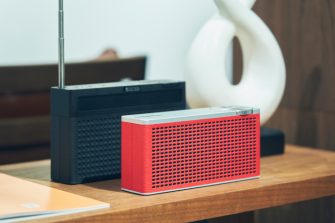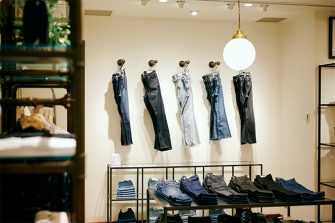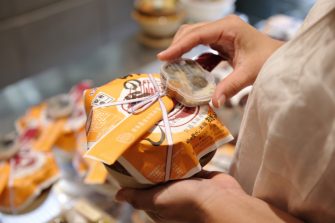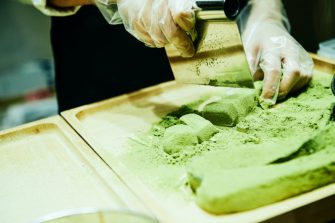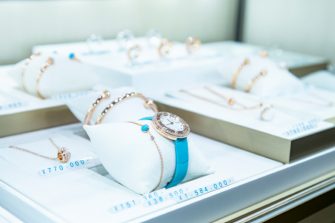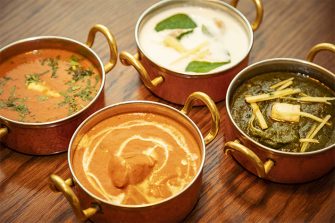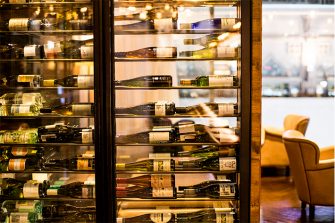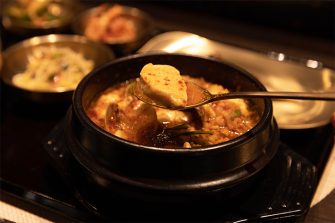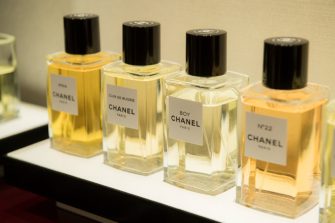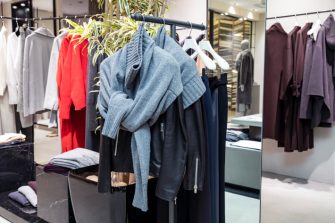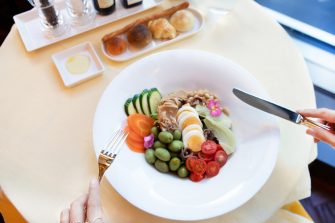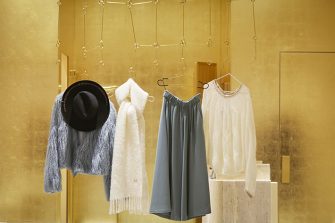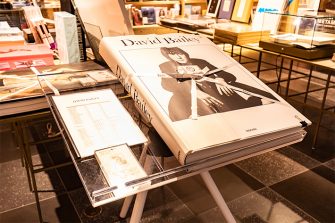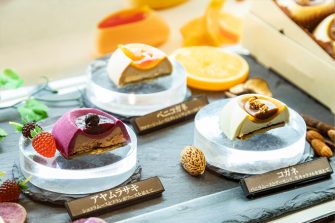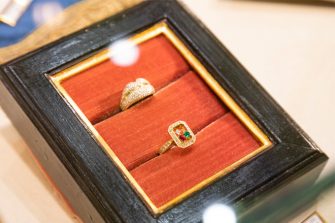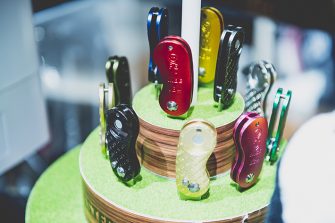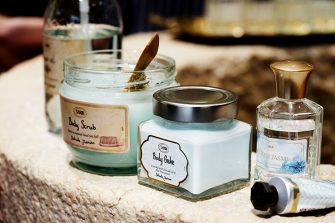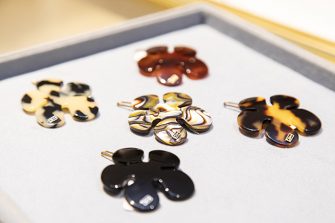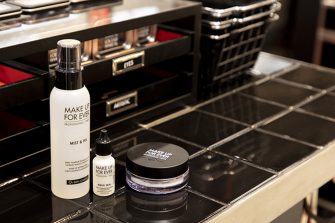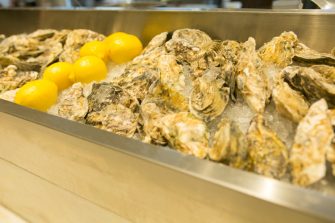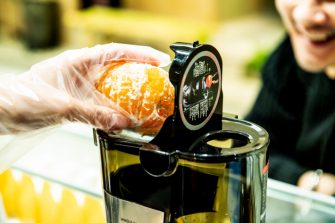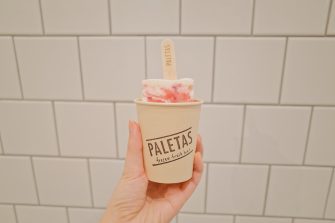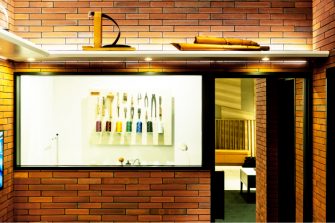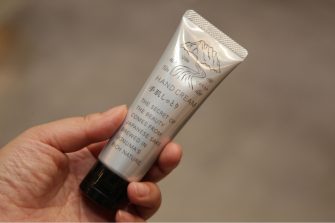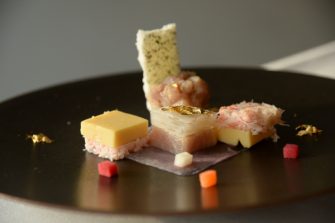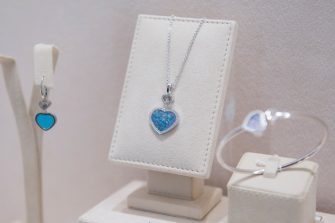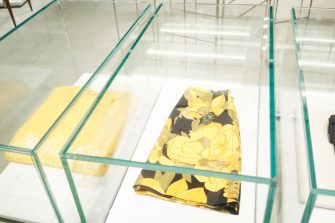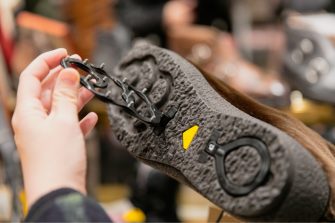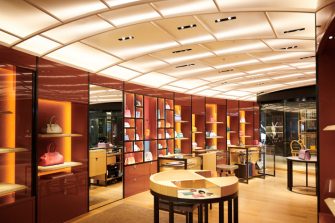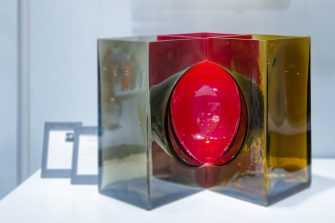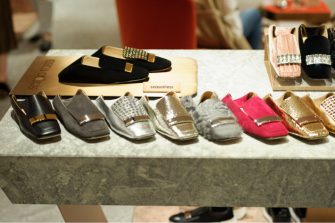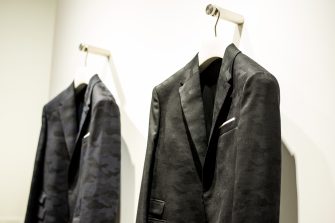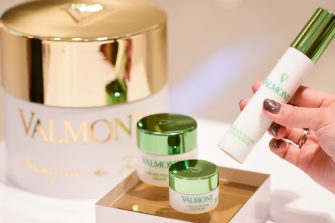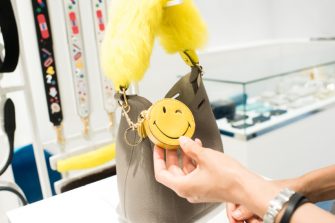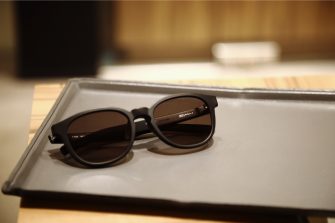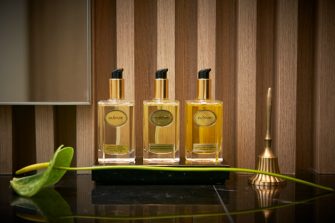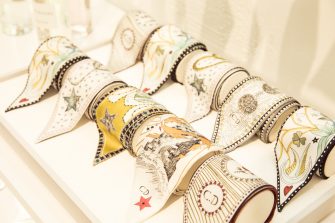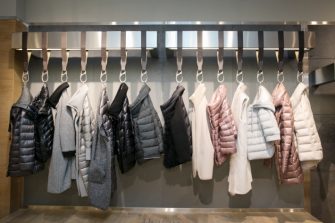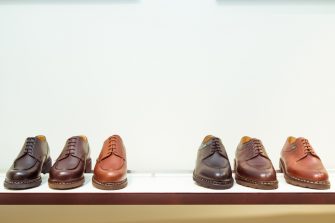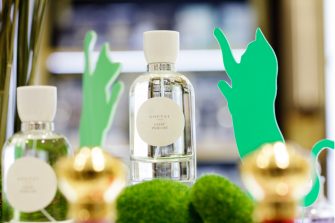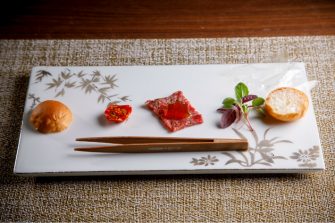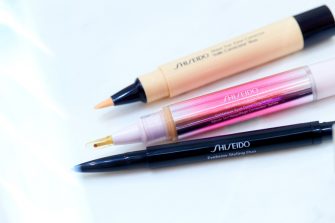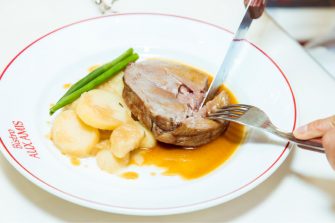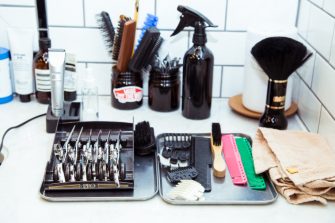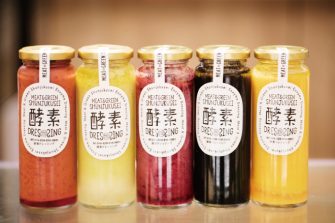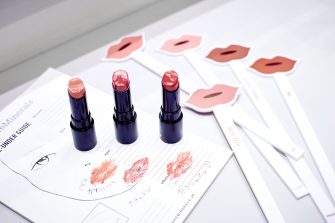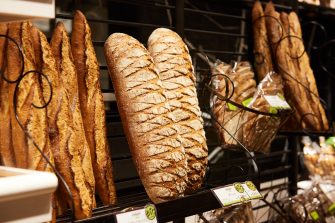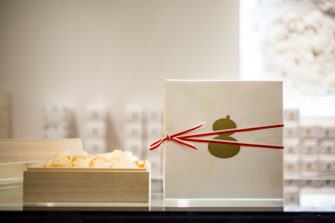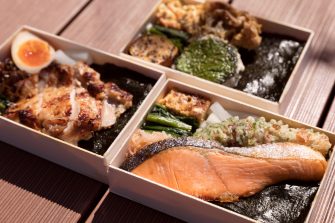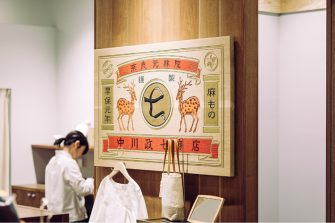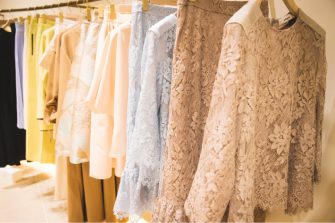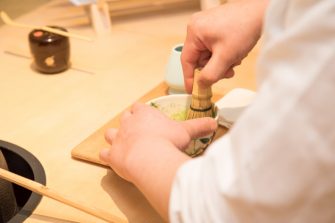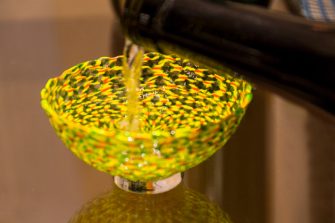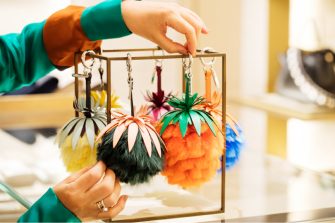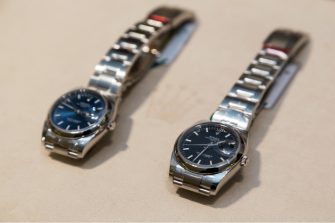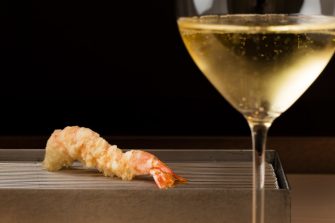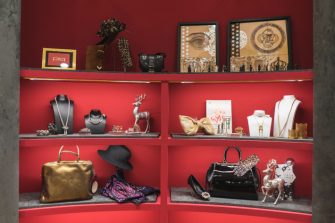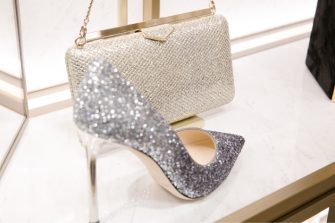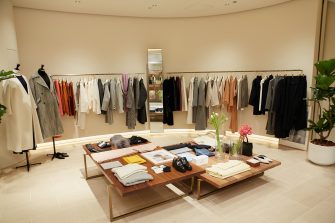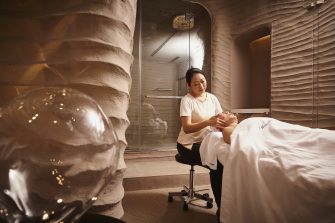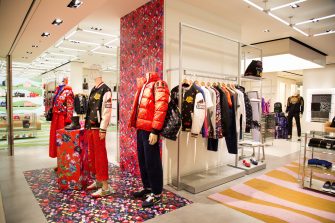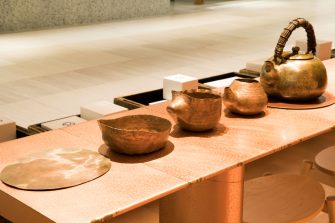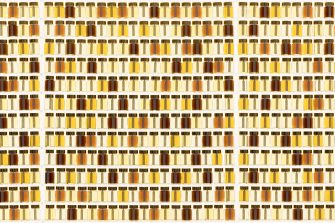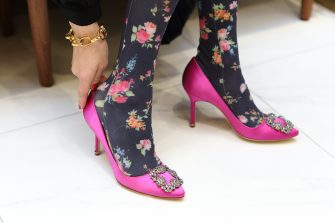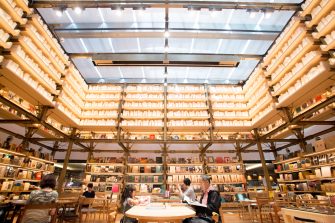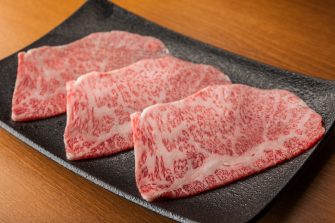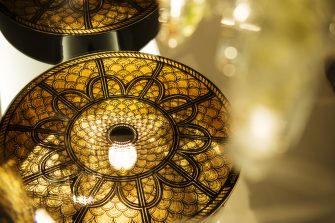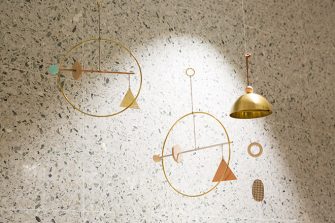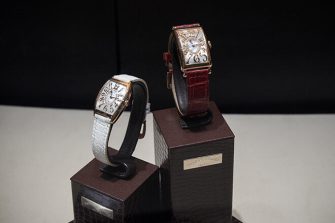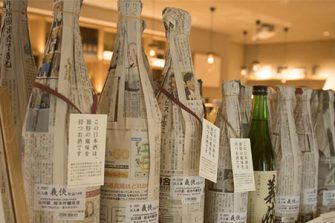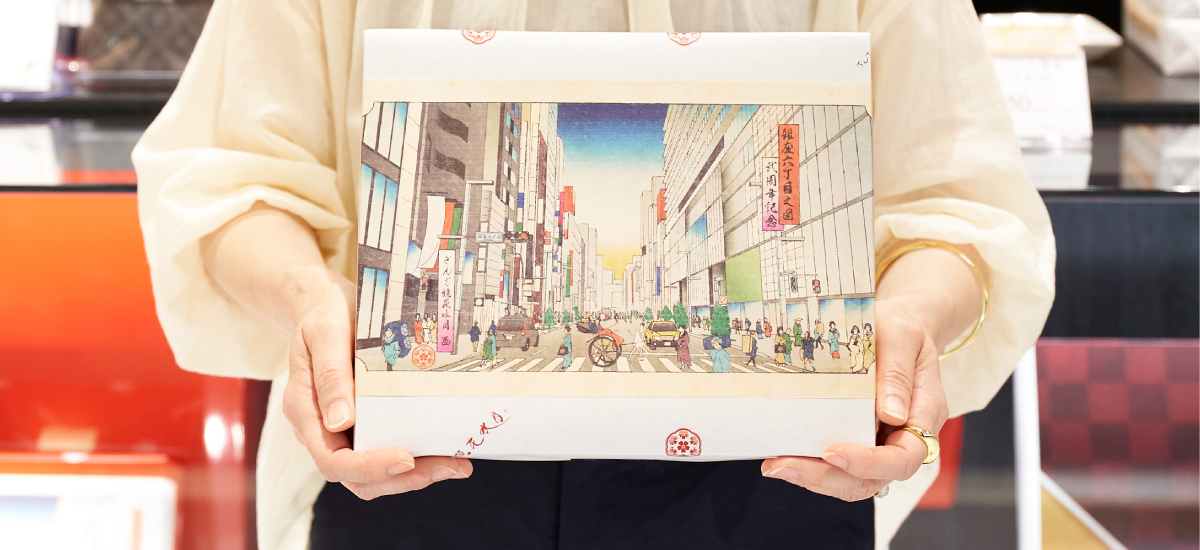

GINZA SIX EDITORS
ファッション、ジュエリー&ウォッチ、ライフスタイル、ビューティ、フード…
各ジャンルに精通する個性豊かなエディターたちが、GINZA SIXをぶらぶらと
歩いて見つけた楽しみ方を綴ります。
GINZA SIXで「温故知新」を体感する Learning from the Old to Create the New at GINZA SIX
北村 美香
GINZA SIX EDITORS Vol.78
「銀座には、すべてのものが揃っているんだよ」。20年ほど前に取材した某歌舞伎俳優が教えてくれました。「足袋専門店から呉服店まで、毎日のごはんの材料からハイクオリティのレストランまで、なんでもあるでしょう?」 そうなんです、私も取材の帰りに食材を買ったり、友人や家族のためのギフトを選んだり。打ち合わせでカフェへ、観劇やハレの日の食事にも、銀座へ足繁く通っています。東京育ちの私が、いちばん多く足を運んだ街かもしれません。そんな銀座詣でに楽しい場所が新たに加わりました。「GINZA SIX」。銀座という街を凝縮したかのようにバラエティに富んだ240強ものお店が入っています。今日は午後から打ち合せだから、お昼前後にぶらぶらGINZA SIXへ。食のジャーナリストとしては、まずレストランやカフェをチェック。あら、ここは次回の打ち合わせにぴったりかも!

まず入ったのは、4Fの「中村藤𠮷本店」のカフェ。京都・宇治に安政元(1854)年創業した宇治茶専門店です。勝海舟から贈られた『茶煙永日香』を家訓に掲げ、天皇陛下へ御茶を献上。茶道お家元より茶銘をいただき、茶業一筋に歩んできた老舗です。20年ほど前、当時流行し始めた生チョコレートに抹茶を組み合わせた画期的な商品を作ったのが、このお店です。さて、窓際のテーブル席へ。石畳が続くあづま通りを見下ろせます。わずか100mほどの通りには私の好きなお店もあり、銀座の歴史を感じる町並みが続いています。ここを見ながらお茶ができるとは。銀座の穴場です。
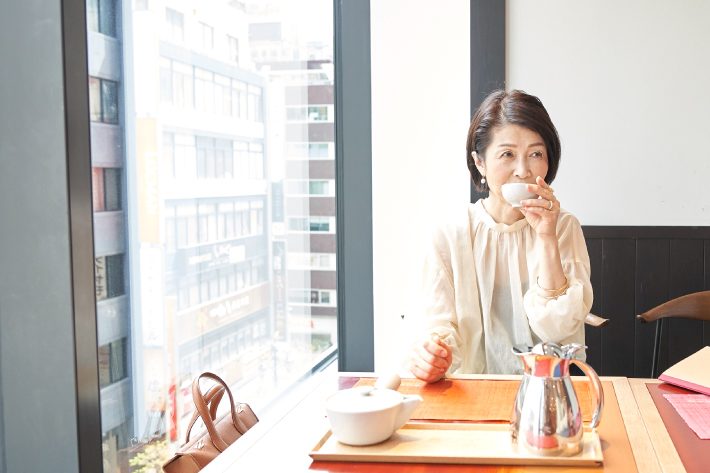
テーブルにお茶のセットが置かれています。「本日のお茶でございます」。あら、日替わりでいろいろなお茶をいただけるなんて。今日は中村藤𠮷本店の代表銘柄「中村茶」。煎茶や玉露など7種類のお茶をブレンドしています。そうそう、お茶をブレンドすることをお茶業界では「合組(ごうぐみ)」と呼んでいます。
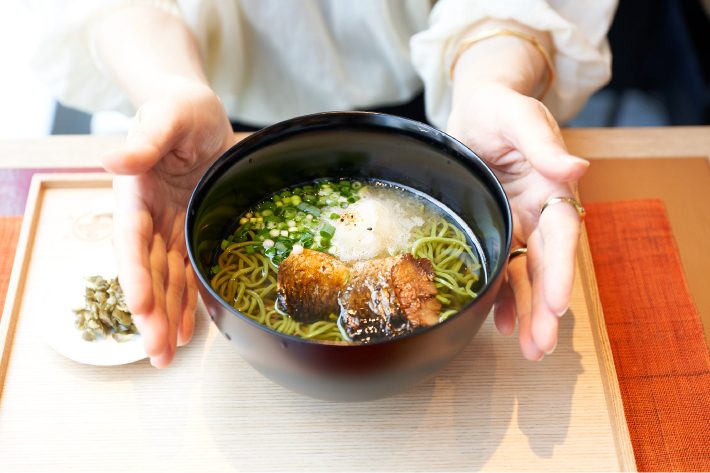
いまはお昼前。メニューを見ると、京都らしい味があって食べたくなりました。「にしん茶蕎麦」(1,204円 ※以下全て税別価格)。抹茶を練り込んだ茶蕎麦の上に、薄甘くやわらかく炊かれたにしんがのっています。おだしの風味が身体に染みます。添えられた「村上重本店」のお漬物も口直しにいい。うーん。こういう味は京都でしか食べられないのに。聞けば「宇治本店をはじめ他店では秋限定ですが、銀座では通年でお出ししています」。東京で、しかも銀座で、関西風のお蕎麦は稀少です。ここは甘いものが有名ですが、これから私はこれ目当てになりそう。
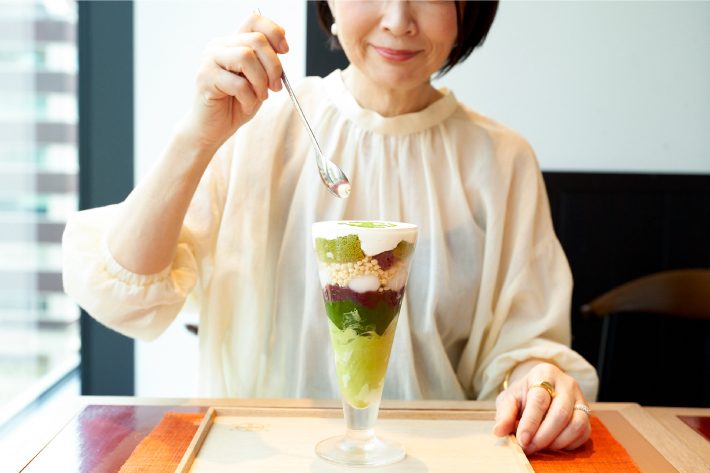
でもやっぱり目が釘付けになってしまったのが、パフェ。ホイップされた生クリームの上に、屋号「まると」を表す紋が抹茶で美しく描かれています。抹茶シフォンケーキ、抹茶アイスクリーム、白玉だんご、生茶ゼリイ、抹茶ソフトクリームと重ねられた中に、小麦のあられの食感やフランボワーズの酸味、栗の甘露煮と丹波大納言小豆の甘みが加わって、抹茶味のシンフォニーです。甘さがよい塩梅に控えめなので、まろやかなお茶のおいしさが引き立っています。お蕎麦を食べた後なのに、ぺろり。「まるとパフェ[抹茶]」(1,297円)
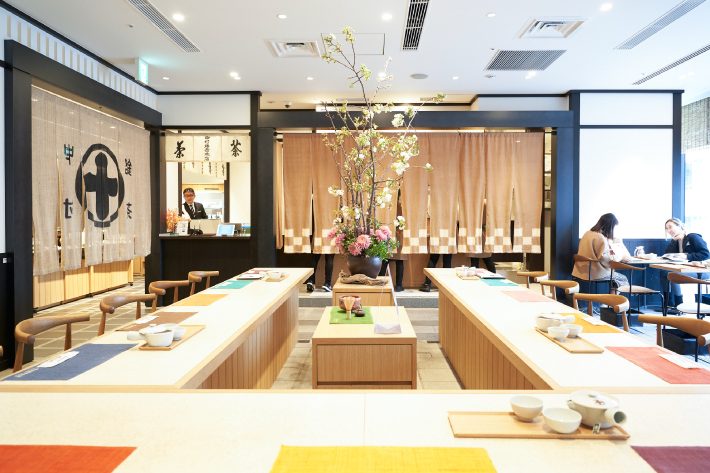
店内はコの字形のカウンターとテーブル席。おひとり様から親子連れ、グループまで幅広い層のお客様が楽しんでいました。昼は混むので、午前中がおすすめ。

「中村藤𠮷本店」の真骨頂のお茶をぜひ! 甘味、旨味、苦渋味のバランスのよい煎茶、奥行きのある、宇治らしい玉露、やさしい味の焙じ茶など、何でも揃っています。豊富な商品知識と、商品への愛情のこもった説明で対応してくださった店長の日野陽菜さん。その丁寧さはお店の誠意そのもの。

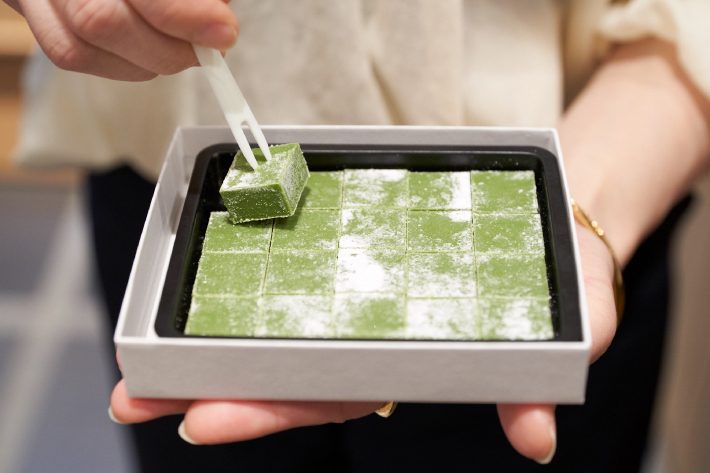
私が20年ほど前に取材した「生ちゃこれーと」(1,200円)。当時から本物の味を追求しており、老舗の底力を感じたのをとても覚えています。クスリとさせてくれるお茶目なネーミングもいいですねー。いまは行列のできる「生茶ゼリイ」をはじめ、抹茶かすていら、渋栗入り抹茶チーズケーキなど、人気の品がたくさん登場しています。
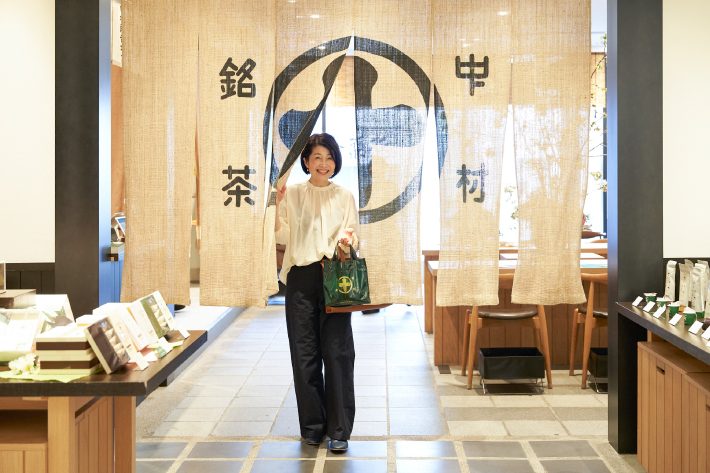
老舗の風格を表した大暖簾をくぐる行為に、テンションが上がります。
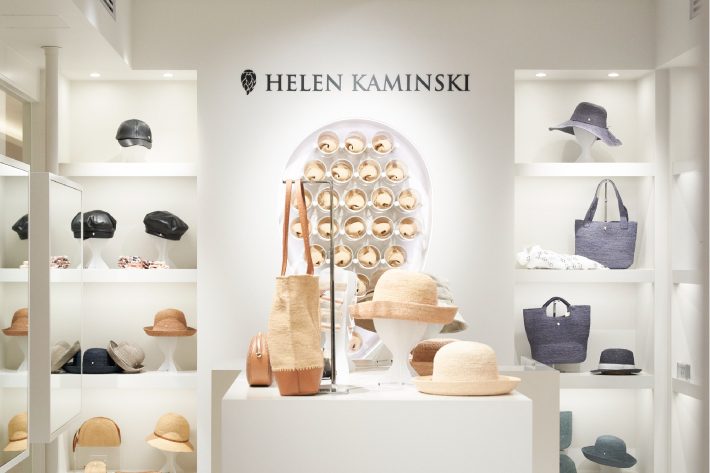
「中村藤𠮷本店」のある4Fはファッションとライフスタイルのお店もあります。ぶらぶらしていると、大好きな「ヘレンカミンスキー」が。10数年前、仕事でオーストラリアへ通っていたとき、現地のお店で帽子を買い、いまも愛用しています。創設者のヘレン・マリー・カミンスキーが、焼け付くようなオーストラリアの日差しから自分の子どもたちを守るため、1983年にラフィア・ハットを手作りしたのがはじまりとか。

最近、犬を飼いはじめて、お散歩用の帽子を探していたので、プリム(ツバ)の広めのものが気になります。気に入ったのは「Acheron」(38,000円)。クラシックなフォルムにレザ―のバンド。
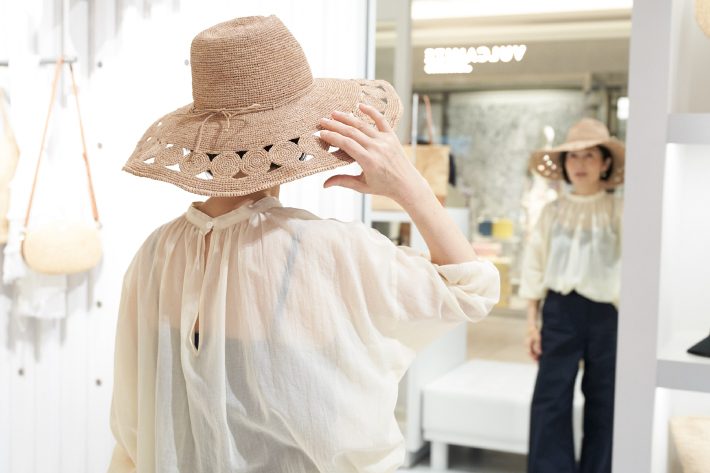
「Sisley」(38,000円)は、手編みされた模様が個性的。帽子はすべて天然素材にこだわって作られています。この帽子に使われているのはラフィア。最高のラフィアを求めていってマダガスカル産に辿り着いたそう。年を経て、色が変わっていくのも、本物ならではの味わいです。

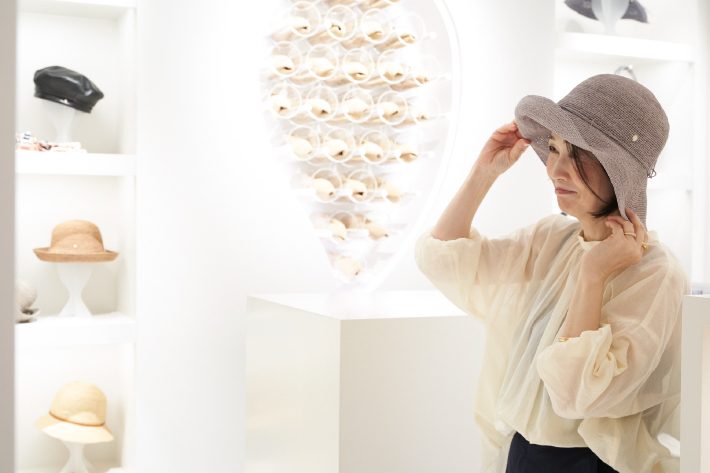
いまは今年の春夏のコレクションが勢揃いしている時期。今回並んでいるものは色が豊富で、淡いトーンのものも。このグレージュな色合いは上品です。サンバイザー「Kirsten」(21,000円)はここ数年の人気商品。いちばん欲しくなったのは、下の写真の定番商品「Provence12」(30,000円)。プリムの狭い同じものを持っていますが、くるくると巻いて収納できるので、旅に欠かせないアイテムです。これはプリムの広いもの。プリムを上げたり下げたり自由自在に形を作ることができるのも便利です。
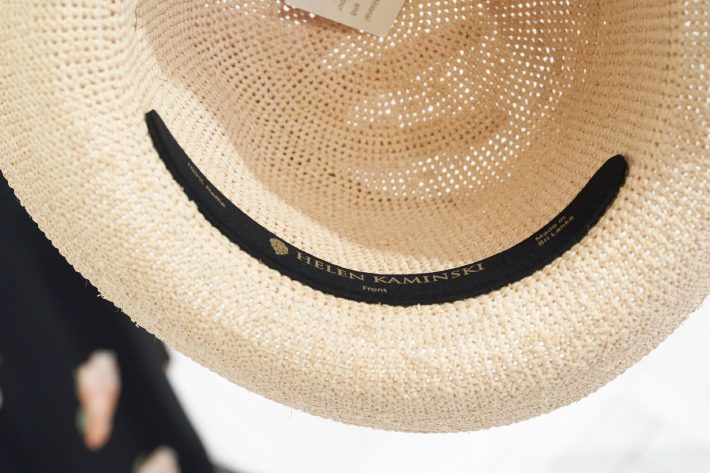
お店で手入れ方法を教えてもらいました。型くずれしたら、スチームを当てれば自分で直せますし、お店でも直してもらえます。内側についているネオプレンバンドは取り替え可能(有料)です。細やかなサービスが帽子の老舗を支えています。
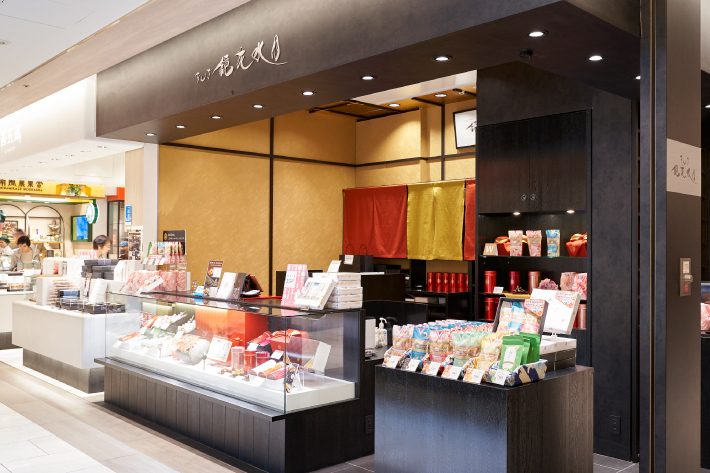
帽子を選んだら、そろそろ地下で手土産を買いましょう。何回も訪れているB2Fのフードエリアです。かりんとうのお店「ぎんざ鏡花水月」が、実は私の大好きな湯島の老舗かりんとう専門店「花月」の新ブランドだということに気付きました。灯台下暗し! 数十年も食べ続けてきたお店のかりんとうが銀座初出店とは。これは買わねばなりません!

新ブランドの商品は3種類。手前から、甘酒を練り込んだ生地に国産きなこをまぶした「あま」。小麦粉に餅米を加えて、サクッと軽い食感に仕上げ、飴掛けした「こはく」(中)。小さくて食べやすいサイズです。黒胡麻をペースト状にして飴に混ぜた「まゆずみ」。どれも従来のかりんとうとは、ひと味違う味と食感です。

GINZA SIX 2周年の限定品・3種詰め合わせ(1,950円)。江戸と現代の銀座が交叉するイラストが目を引きます。なんと3代目の溝口智広社長が描いたとか。私としては、限定品ではなく定番にしてほしい。銀座は手土産の宝庫ですが、こちらのかりんとうも、私の手土産手帖にオン!
2時間ほどGINZA SIXをぶらぶらしましたが、今回の3軒はすべて以前から知っているお店。それぞれ、古い歴史を持っていますが、現状に甘んじることなく、進化されていました。「温故知新」を地でいく老舗ばかりです。まさに「故(ふる)きを温(たず)ねて新しきを知る」2時間。銀座にはすべてのモノ、そしてモノ作りのフィロソフィーがあるんですね。あなたに寄り添ってくれるフィロソフィーをGINZA SIXで探してみてください。
Text:Mika Kitamura Photos:Futoshi Osako Edit:Yuka Okada
“Ginza has everything,” remarked a Kabuki actor I interviewed around 20 years ago. “It’s got the whole lot, doesn’t it? From specialist tabi (Japanese socks) stores and kimono boutiques to places where you can buy everyday food ingredients to high-quality restaurants.” He is right. In Ginza, I buy some food on my way back from work or pick out gifts for my friends or family. I also go to Ginza frequently to attend meetings at cafés, take in plays, or dine on celebratory occasions. I grew up in Tokyo, but this may be the district I visit most. And now there’s a great new destination for me: GINZA SIX, the whole of Ginza distilled into one place containing more than 240 stores of quite remarkable variety. I have an afternoon meeting today, so around lunchtime I wander over to GINZA SIX. As a food journalist, I start by checking out the restaurants and cafés. “Oh, this place would be perfect for my next meeting,” I think.

My first stop is a café at Nakamura Tokichi Honten on the fourth floor. Specializing in Uji tea (a tea from Uji in Kyoto prefecture), it was founded in Uji in 1854, the first year of the Ansei era. The phrase Saen Eijitsu Kanbashi (aroma of tea on a long spring day), inscribed on a scroll presented as a gift from Katsu Kaishuu, was adopted as the family motto, and gifts of tea were offered to the emperor. The name of the tea blend was chosen by a tea ceremony master. The company has been in the tea business ever since. This is the same teahouse that came up with the revolutionary idea of combining matcha (powdered green tea) and ganache some 20 years ago, an innovation that quickly became popular. Today, I take a seat by the window, where I can look down on the brick-paved Azuma Street. The street is just 100 meters long or so, but it has a shop I like and an atmosphere that evokes the history of Ginza. This place is one of the best-kept secrets for teatime in Ginza.

There’s a tea set on the table. “This is the tea of the day,” I’m told. You can try various teas that change each day. Today’s is Nakamura-cha, the representative brand sold by Nakamura Tokichi Honten, a blend of seven types of medium- and high-grade tea. In the world of tea, the term gogumi describes the blending of tea.

It’s just before lunchtime. Looking at the menu, I decide I feel like eating something with a Kyoto flavor. I choose Pacific herring with matcha soba (1,204 yen; all prices listed before tax). Matcha is kneaded into the soba flour. The dish also features slightly sweet and tender simmered Pacific herring. The flavor of the dashi seeps deep into the body. Served as a side dish, the Murakamijyu Honten pickles are great for cleansing your palate. These are flavors you would normally encounter only in Kyoto. At all the other branches, including the main store in Uji, the server says, the dish is only offered in the autumn. Here at Ginza, it’s served year round. In Tokyo, and especially in Ginza, Kansai-style soba is rare. The restaurant is also renowned for its desserts, but this very soba will set it apart as a café I plan to return to in the future.

Still, what ends up catching my eye is the parfait. It’s topped with fresh whipped cream, on top of which the teahouse emblem, a cross inside a circle, is beautifully drawn with matcha. The parfait contains layers of matcha chiffon cake, matcha ice cream, Shiratama dango (sweet rice dumplings), namacha (freshly picked tea leaves) jelly, and matcha soft serve ice cream. There’s also crunchy wheat arare (bite-sized crackers) and raspberries, as well as candied chestnuts and Tanba Dainagon azuki beans, all of it building to a tea-flavored symphony. The sweetness is just right and the flavors subtle: the mellow deliciousness of the tea stands out. Even though I’ve just had soba, I find myself gulping it down. (Maruto parfait [matcha]) (1,297 yen).

The interior features tables and counter seats arranged in a U. Guests included those on their own, parents with children, and groups. It gets crowded at lunchtime, so I recommend going in the morning.

You also have to try the Nakamura Tokichi Honten tea! They have every variety you can imagine. The medium-grade tea balances sweetness, richness, and bitterness. The premium tea presents the depth you associate with Uji tea. There’s also roasted tea, which has a milder flavor. All this is explained to me by Haruna Hino, the manager, who demonstrated a wealth of product knowledge and genuine affection for the products—a level of care that attests to the sincerity of the teahouse.


This is the “nama-chacolate” (the term “chacolate” coined from cha, the Japanese word for tea, and “chocolate”) (1,200 yen) I reported on 20 years ago. Right from the beginning, the goal was to achieve a singular, authentic flavor. I remember being struck by the potential of the long-established teahouse. The humorous naming of the product was also clever and made me chuckle. Nowadays the teahouse offers a range of popular products, most notably the namacha jelly, for which waiting lines form, as well as matcha castella cake and matcha cheesecake with candied chestnut.

Anticipation builds as you pull aside a large noren (curtain hung at the entrance to traditional shops in Japan) that is the hallmark of long-established shops.

The fourth floor, where Nakamura Tokichi Honten is located, is also home to fashion and lifestyle stores. Strolling around, I come across one of my favorites: Helen Kaminski. Around ten years ago, when I traveled to and from Australia for work, I bought a hat at one of the stores there. I still wear it all the time. The brand traces its roots to 1983, when founder Helen Kaminski handcrafted a raffia hat to shield her children from the searing Australian sun.

I got a pet dog recently, and I’ve been looking for a hat I can wear when I take it for walks. I’m drawn to the ones with wide brims. I soon find one I like, the Acheron (38,000 yen). It has a classic profile and a leather band.

The Sisley (38,000 yen) is unique for its handwoven pattern. All the hats are made from natural materials. This one is made of raffia. Apparently, the designer went looking for the finest raffia and settled on one made in Madagascar. As the years pass, the color may change, but this adds to the brand’s authentic character.


The brand recently launched this year’s spring/summer collection. The hats currently on display have a variety of hues; you’ll find pale tones, too. This greige shade is elegant. The Kirsten sun visor (21,000 yen) has been one of the brand’s most popular products in recent years. But the hat I want the most is the classic Provence 12 (30,000 yen) shown in the photograph below. I have the same one with a narrower brim. It can be rolled up for storage, which makes it a travel essential. This one has a wider brim, which can be turned up or down to suit the light, the elements, or the mood.

The staff presented words on proper hat care. If the hat loses its shape, you can restore it yourself by applying steam. You can also bring it in to the store, where the staff will do it for you. The neoprene band inside the hat can be replaced (for a fee). This attentive service helps explain why it’s such a long-established hat brand.

After choosing my hat, it’s time to head down to the basement to buy some presents. I go to the food area on the second belowground floor, a place I visit frequently. I realize that Ginza Kyoka Suigetsu, a karintou (fried dough cake) shop, is a new brand operated by Kagetsu, a long-established karintou shop in Yushima that I love. It’s amazing to have come all this way only to find a store, the company’s first in Ginza, selling the karintou I’ve been eating for decades. I just have to buy some!

Three types are sold under the new brand. From the front of the photograph, the first one is Ama. Amazake (sweet sake) is kneaded into the dough, which is coated with Japanese roasted soy flour. Next is Kohaku (middle), for which glutinous rice is added to wheat flour, which is then fried and glazed to create a light, crunchy texture. They’re small, convenient bite sizes. And, finally there’s Mayuzumi, for which black sesame seeds are made into a paste, which is mixed with sugar glaze. The flavor and texture of each is a slight departure from conventional karintou.

A limited-edition assortment (1,950 yen) is available to celebrate the second anniversary of GINZA SIX. It features an eye-catching illustration, apparently drawn by third-generation president Tomohiro Mizoguchi that mixes old Edo with modern Ginza. I wish it were available all the time, not just for a limited period. Ginza is a treasure trove for presents, and I’m definitely making a note of the karintou here!
I strolled around GINZA SIX for about two hours. All three stores I visited are places I knew about before. Each has a long history, but they aren’t content to rest on their laurels. Quite the opposite: they’re choosing to evolve. They’re learning from the old to create the new. Truly, it was a two-hour period in which I visited the old and became acquainted with the new. Have I mentioned that Ginza really does have everything and that palpable here are philosophies regarding how things are made? Why not come visit GINZA SIX to go looking for a philosophy that matches yours?
Text:Mika Kitamura Photos:Futoshi Osako Edit:Yuka Okada
北村 美香
食ジャーナリスト。広告代理店勤務を経て、食ジャーナリストの大本幸子氏に師事。ヨーロッパの三ツ星から韓国の路地裏の食堂、ブータンの農家まで世界24カ国を食べ歩く。「朝日新聞」「婦人公論」「T Japan web」などでコラム連載。「エクラ」「T Japan」「アエラスタイルマガジン」「Numero Tokyo」などで企画編集及び執筆。家庭料理の大切さを伝えたいと、「ウー・ウェンの家庭料理の8つの基本」(文藝春秋)など、レシピブックの企画編集多数。


